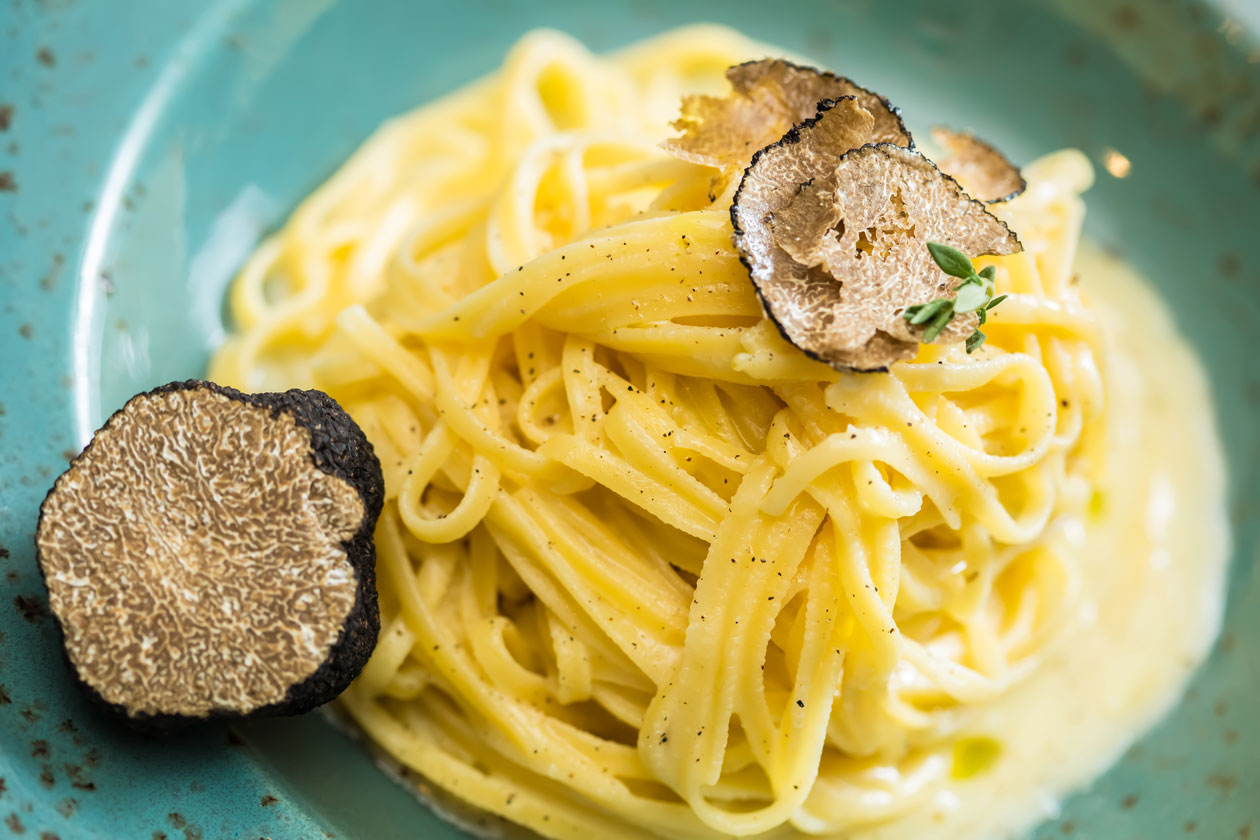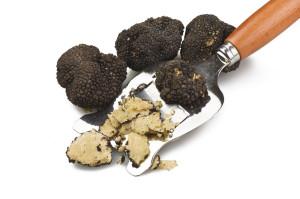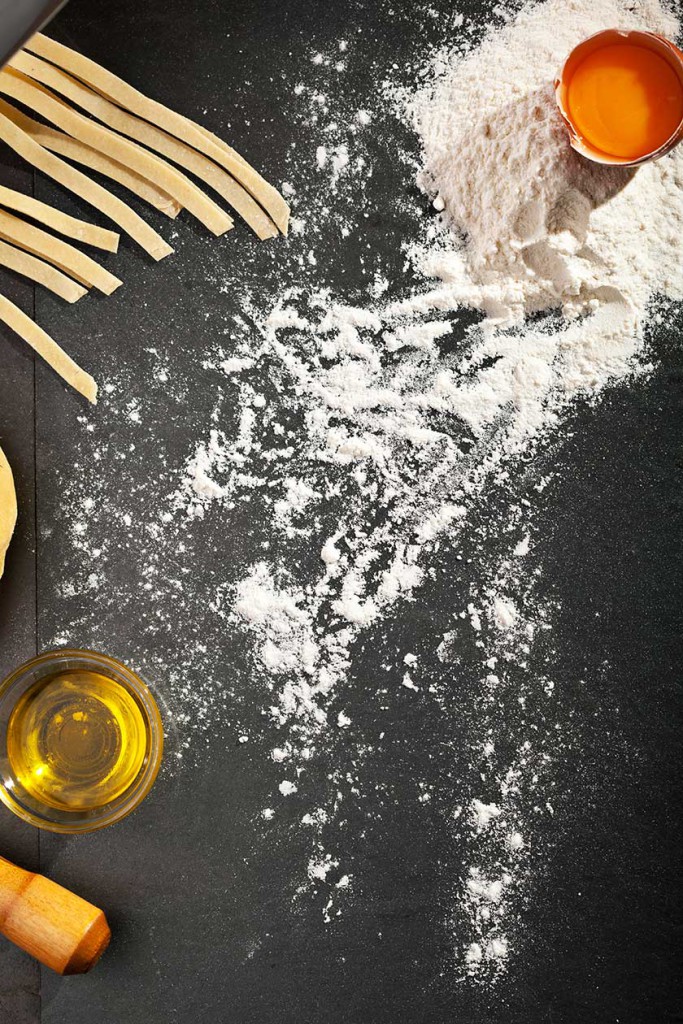
Have We Come Back Full Circle to the Classical World?
May 16, 2016
Dante Recommends: Howson Paintings to go Under the Hammer at Fellows
May 18, 2016Marco Pernini, resident chef to the celebrities at Dantemag talks about Tuber melanosporum (black truffle to me and you!), this precious fruit of the earth that has delighted poets and philosophers since the beginning of our civilisation and gives you his recipe for the best tagliatelle ever with Tuber melanosporum from Norcia.
by Marco Pernini
The first record of truffle’s existence appeared in “Natural History” by Pliny the Elder but also Plutarch, the Greek philosopher, describes the birth of this magnificent tuber as a result of the combined action of water, heat and thunderbolts! Other poets, including Juvenal, explained that the origin of this precious fruit of the earth was due to a thunderbolt hurled by Jupiter close to an oak tree sacred to the father of gods. Jupiter was also famous for his extraordinary sexual dynamism. This is why the truffle has always been recognised as having aphrodisiac properties. Umbrian physician Alfonso Ceccarelli is among the various Renaissance writers who with his book “Opusculus de Tuberibus” (1564) summarised the opinions of Greek and Roman naturalists and indicated that the truffle was always very much appreciated, particularly on the tables of the nobility and of senior prelates and in one of his different anecdotes, he tells how, for many of them, its aroma was a sort of “quintessence” that had an “ecstatic effect” on human beings.
I imagine if this was not enough to arouse your interest, to coin a phrase, in this precious element of nature let me venture more into the details so you can learn more about this delicacy.
Truffles come in two types, black and white and, apart from the obvious difference in colours, are not made of chocolate. Just kidding !
Despite the fact both type of truffles can be harvested twice a year, in summer and in winter, the summer black truffle and winter black truffles are actually two quite different varieties unlike the white truffle which is the same all year round.
Getting beyond their botanical roots, so to speak! , another difference and the most important one, is their taste and this determines the way they normally get used in cooking.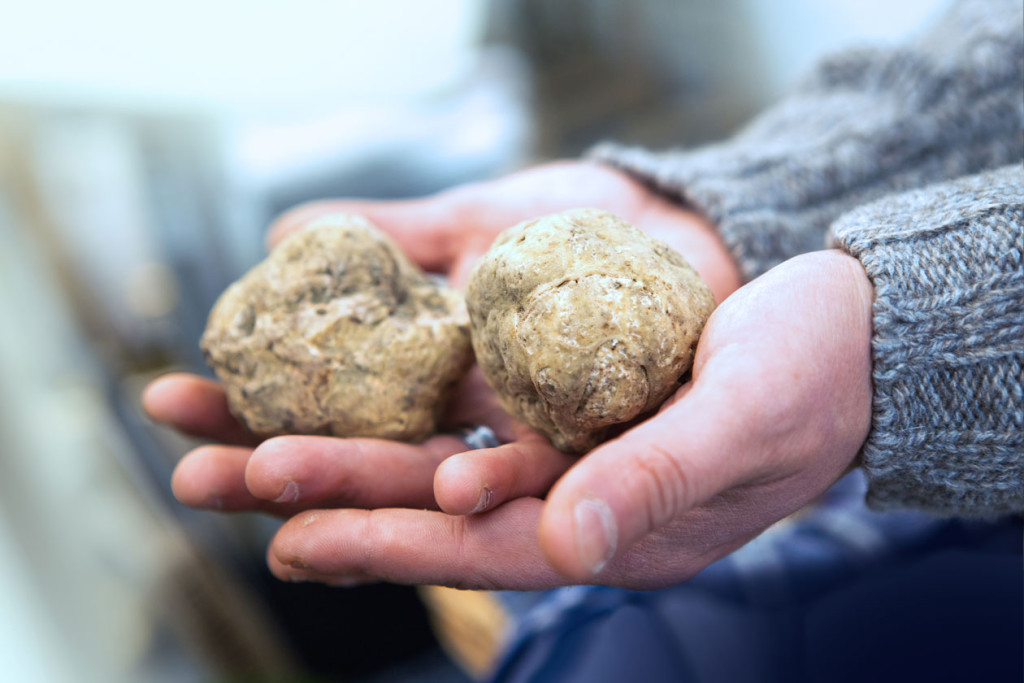
Generally, white truffles are best used raw, since they have that intense depth of flavour with a hint of garlic and shallots that gets released when you cut them fresh but ultimately it always depends on the dish and the chef.
Black truffles are best eaten cooked as is the case for the precious black truffle from Norcia, the world famous Italian capital for black truffles.
If you want to experiment a little bit more with different combinations and you have not use this nectar of nature before, summer white truffles are probably your best bet as they are more affordable – the flavour is still strong but less musky than winter white truffles.
Black winter truffles from Norcia are the most sought-after, but you should be aware that, unfortunately, there are copies around that can easily be mistaken for them due to having a similar shape and colour and but that’s all they have in common. The tuber aestivum is the black truffle harvested in summer, also called scorzone in dialect, which is fine but it is nothing compared to the tuber melanosporum harvested in winter, and this is the one to buy, although the price is exponentially higher. But you can’t compare a crystal to a diamond, can you?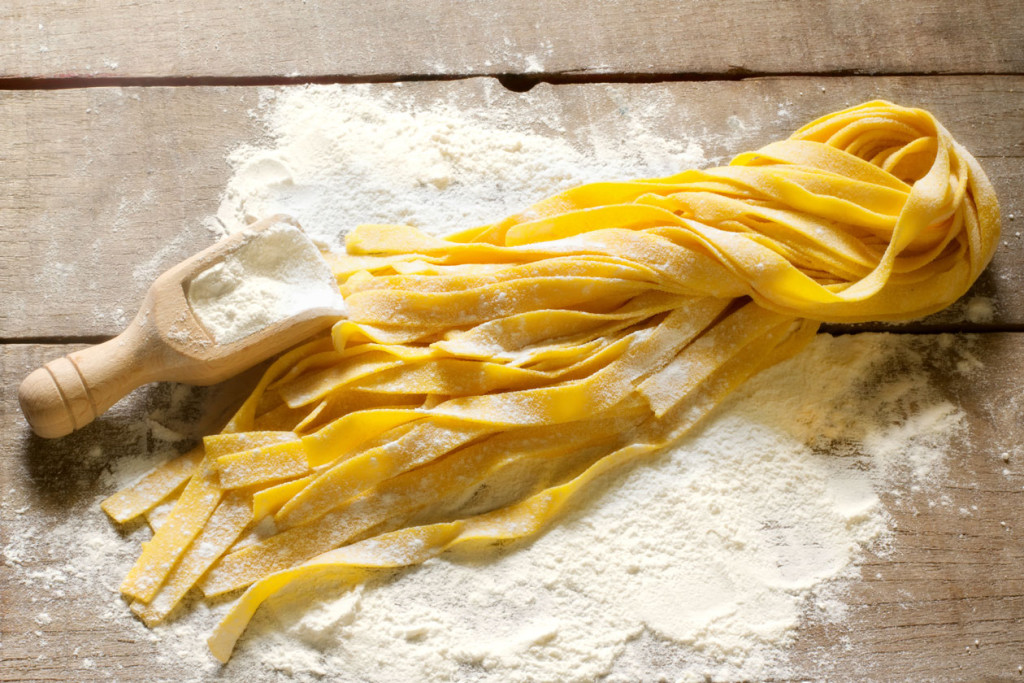
It was in fact the French gastronome and food writer Brillat-Savarin in the eighteenth century who first called the truffle the “diamond of cooking”. While his compatriots, the writer Alexandre Dumas said it was the “sancta sanctorum” of the table. In England Lord Byron loved its intense flavour so much he kept one on his desk, because, according to him, it helped his creativity, and coming closer to home, Italian composer Gioacchino Rossini described the truffle to be “the Mozart of all tubers”.
Well if that is not enough to whet your appetite and your intellect, then what more can I say? Whether you are in “flavour” of the white truffle cut raw or the more elegant and established black winter truffle, make sure, just you would for a diamond, you always know where it comes from before you buy it. And as Norcia is not only the world capital of the black truffle but also my home town I have decided to keep it local and leave you with one of my recipes, using black winter truffles from Norcia – only the best for Dantemag readers!
Home-made tagliatelle with black winter truffles from Norcia
Making the fresh tagliatelle.
As a rule, I normally use one egg and 100g of flour per person and while this
recipe here is for two people, you can, of course, use multiply of this, according to how many people you are cooking for.
Place your quantity of flour on a flat, clean surface. Make a well in it and pour the beaten eggs in. Add a pinch of salt , then, with a fork, start beating the eggs, little by little mixing in the flour from the inside of the well. When the mixture becomes a paste , start using your hands and knead until smooth, adding more flour, if necessary to prevent it from sticking to the table, making sure all the while that it never becomes lumpy.
Cover the dough with a cloth or a clingfilm then let it rest for 30-45 minutes at room temperature – this is very important for the elasticity of the pasta when you roll it out, do not skip this stage!
Now you can either use a pasta machine or a rolling pin to roll out the pasta.
I like mine ½ mm thick but you can change it according to the texture you prefer.
Cut into strips of about 6-7 mm width spread them out adding a little flour to avoid sticking and hey presto, there you have your fresh tagliatelle
For the sauce
300 ml of fresh cream .
• small shallot finely chopped, 1 squashed clove of garlic
• spoonfuls of extra virgin olive oil, salt and pepper
• 1 fresh black Norcia summer truffle.
Method:
In a large fry pan, heat the oil; then add the shallot and garlic and cook on a moderate heat.
Add the cream, salt and pepper and reduce, stirring from time to time.
In the meantime, cook the tagliatelle and drain, then return to the saucepan, add the creamy sauce, mix it all together and put on a plate.
Finally grate some truffle on top and serve immediately
If you feel you don’t have the time to make your own pasta, you can always buy fresh, of course but I would strongly recommend you to try to make it at home – there is world of difference and it is so rewarding.



